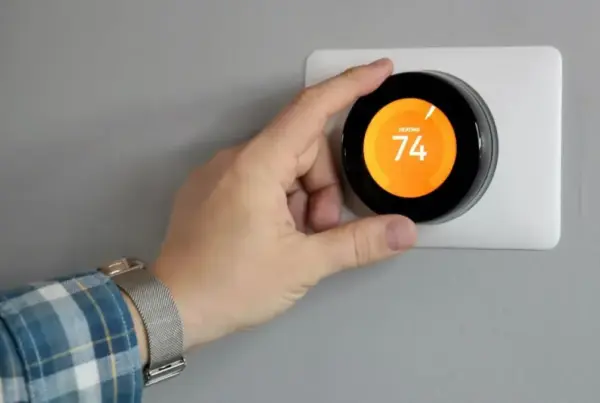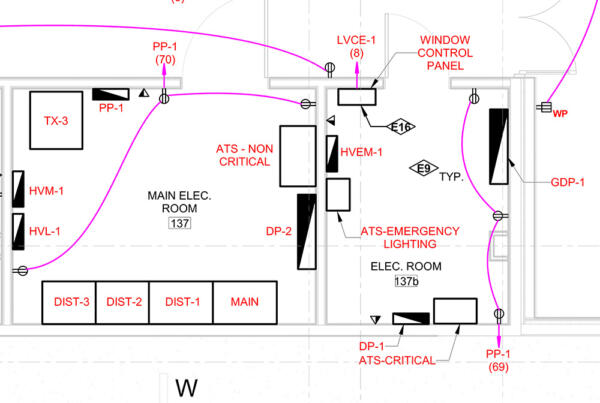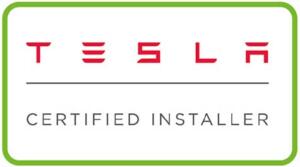The Institution of Engineering and Technology (IET) and BSI, have today signed off the content for Amendment 2 to BS 7671:2018 (18th Edition of the IET Wiring Regulations), which introduces a new requirement for Arc Fault Detection Devices (AFDDs), updated requirements for the fire safety design for buildings and a new chapter on Prosumer’s Low Voltage Electrical Installations.
Amendment 2 comes into effect immediately when published on 28th March 2022 and the previous version, BS 7671:2018+A1:2020, will be withdrawn six months later.
This essential update to the IET Wiring Regulations will form the national standard to which all new electrical installations and additions and alterations to existing electrical installations in the UK are to comply. The IET and BSI are now urging all electrical professionals to ensure they become familiar with the changes.
Significant changes include:
- a new requirement for Arc Fault Detection Devices (AFDDs) in some AC final circuits for installations in some types of higher risk residential buildings;
- the requirement for the fire safety design of buildings to be documented where specific conditions of external influence exist, such as protected escape routes and locations with risk of fire;
- method for determining the requirement to provide overvoltage protection;
- changes to identification, labels and notices, such as for consumer units, affecting how safety information is provided to the user of the electrical installation;
- a chapter on Prosumer’s Low Voltage Electrical Installations, in a new part, Part 8.
Please see below for further in-depth information on these changes;
Chapter 42 Protection against thermal effects
Protection against fire resulting from an electrical installation and the use of an electrical installation has been necessary ever since electricity was first introduced into buildings. Chapter 42 of Amendment 2 of the 18th edition (BS 7671:2018+A2:2022) includes requirements for the protection of persons, livestock and property against fire caused by electrical equipment, against burns and against overheating, together with precautions where particular risks of fire exist.
Protection against fire caused by electrical equipment:
Regulation 421.1.7 has been redrafted. It is now a requirement (rather than a recommendation) to protect final circuits supplying socket-outlets and fixed current-using equipment with a rated current not exceeding 32 A by arc fault detection devices (AFDDs). The Regulation recommends AFDDs for all other final circuits, but allows AFDDs to be omitted (for example, in lighting circuits in dwellings), where unexpected disconnection of the circuit could cause danger – and gives examples of this. The use of AFDDs does not obviate the need to apply one or more of the measures provided in other clauses in BS 7671.
Arcs can be caused by insulation defects in cables, damage to cables by impact and penetration of nails and screws, loose terminal connections, and so on. An AFDD is designed to operate (trip) when a dangerous arc is detected by analysing the signature of the arc. Switching arcs caused by fluorescent lighting, for example, should not cause an AFDD to operate. AFDDs can be installed in distribution boards and consumer units to protect final circuits and should be installed in accordance with the manufacturer’s instructions. When installing components from a different manufacturer to that of the existing equipment in a distribution board or consumer unit, it is important to seek advice from the manufacturer that the new equipment is suitable and compatible.
Important:
Section 710 (Medical locations) contains particular requirements.
Regulation 710.421.1.201 states:
In medical locations of Group 1 and 2 Arc Fault Detection Devices (AFDDs) are not required to be installed. In medical locations of Group 0 Arc Fault Detection Devices (AFDDs) shall be used subject to a risk assessment.
Precautions where particular risks of fire exist
Regulation 422.1 (Precautions where particular risks of fire exist. General) now introduces requirements for the fire safety design of the building(s) to be documented. Regulation 422.2 (Conditions for evacuation in an emergency) introduces separate requirements for escape routes and a new concept of ‘protected escape routes’. Reference to conditions BD2, BD3, and BD4 have been deleted.
Chapter 44 Protection against voltage disturbances and electromagnetic disturbances
Clause 443 of Amendment 2 of the 18th edition (BS 7671:2018+A2:2022) deals with the protection of electrical installations against transient overvoltages of atmospheric origin transmitted by the supply distribution system, and against switching overvoltages generated by the equipment within the installation. The AQ criteria (conditions of external influence for lightning) for determining if protection against transient overvoltage is needed were removed when the 18th edition was first published in 2018. Amendment 2 contains further significant changes.
Regulation 443.4 for determining if protection against transient overvoltages is needed has been redrafted.
Regulation 443.4.1 now requires protection against transient overvoltages to be provided where the consequence caused by the overvoltage could result in:
(i) serious injury to, or loss of, human life; or
(ii) significant financial or data loss.
Except for single dwelling units, for all other cases where the consequences of an overvoltage of atmospheric origin are considered to be intolerable, a risk assessment has to be performed to determine if protection against transient overvoltages is required.
Regulation 443.4.2 requires protection against overvoltages to be considered in the case of equipment likely to produce switching overvoltages or disturbances and gives conditions.
Note: There are different types of surge protection devices (SPDs). Type 1 are generally installed at the origin of the installation; Type 2 are generally installed at distribution boards within the installation; and Type 3 are generally used near terminal equipment. It is important that SPDs are selected and installed in accordance with the manufacturer’s instructions. The IET On-Site Guide gives further guidance on the use of SPDs.
Chapter 82 Prosumer’s low-voltage electrical installations
This new Chapter within BS 7671 covers energy efficiency measures, the interface with the smart grid, the management of electricity consumption, the management of renewable sources of electricity, and energy storage. This is a complex area and this article only mentions some of the many requirements concerning prosumers’ electrical installations (PEIs).
Chapter 82 provides additional requirements, measures and recommendations for the design, erection and verification of all types of low-voltage (LV) electrical installations. This includes the local production and/or storage of energy, in order to ensure compatibility with existing and future ways to deliver electrical energy to current-using equipment or to the public network by means of local sources. Such electrical installations are designated as PEIs.
Note: A new ‘foundation earthing’ requirement has been introduced into Chapter 54 to make arrangements for a suitable earth electrode provision for PEIs not connected to the LV public supply network.
The concept of the PEI has been developed to answer the needs of the end-user. For example, where a PEI has a storage capability, the user could take advantage of low demand to store energy when its price may be lower.
With active energy management, the end-user should be able to permanently monitor and control his or her own electricity consumption and production. The concept of the PEI has also been developed to take advantage of renewable sources of energy (such as solar photovoltaic (PV) and wind turbines) and energy storage.
There are different types of PEI. They include:
individual PEIs
collective PEIs and
shared PEIs.
Individual PEIs are considered to be an electrical installation (for example, a private house or workshop) that can either produce or consume electrical energy. Three operating modes are considered for individual PEIs. These are:
direct feeding mode (where the installation is supplied from the grid or supply network)
island mode (where the installation is supplied from its own generator) and
reverse feeding mode (where the installation supplies electricity back to the grid or supply network).
Collective PEIs are considered to be several consuming electrical installations connected to the same public distribution network and sharing one common set of local power supplies and energy storage equipment.
A collective PEI could, for example, be a group of single private houses, a group of flats in a building, or a group of small shops in a shopping centre with a common electrical power supply from one separate unit (generator/energy storage) producing energy and from the grid/supply network. Three operating modes are considered for collective PEIs. These are:
direct feeding mode (where the installation is supplied from the grid or supply network)
island mode (where the installation is supplied from its own generator) and
reverse feeding mode (where the installation supplies electricity back to the grid or supply network).
Shared PEIs are considered to be, for example, where a number of individual houses group their interests and agree to share their supply with their neighbours from their own renewable power sources. Each house-owner may have installed private renewable energy power sources, which can either supply the private electrical installation or the group of private electrical installations. The three operating modes considered for shared PEIs are as for individual and collective PEIs above.
PEIs and EEMS
A PEI is considered to be a low-voltage electrical installation connected (or not) to a public distribution network (the grid), able to operate with local power supplies (for example, PV panels or wind turbines), and/or with local storage units (for example, batteries). It monitors and controls the energy from the connected sources delivering it to current-using equipment (for example, motors, heating, lighting, and appliances such as washing machines, etc), and/or local storage units (for example, batteries), and/or the public distribution network.
There is a wide range of microgeneration technologies, including solar PV, wind turbines, small-scale hydro, and micro combined heat and power (CHP).
One of the key components of a PEI is its electrical energy management system (EEMS). The objectives of an EEMS are to control the connection of the PEI to the smart power grid; to manage, locally, the electrical energy production; to manage electrical consumption; and to manage the energy procurement from the grid or supply network. This is carried out using meters and measuring equipment, in order to communicate the correct electricity parameters to the EEMS and the direction of the energy flow.
Technical issues
Technical issues mentioned in this Chapter cover a whole range of safety issues, including protection against electric shock, system earthing, the selection of protective devices, isolation of the installation, protection against overcurrent, outage of the public network, and protection against transient overvoltages.
Further technical issues include requirements concerning interaction with the public network, energy storage, designing for flexibility of load and generators, electric vehicle (EV) charging, and selectivity between current protective devices.











